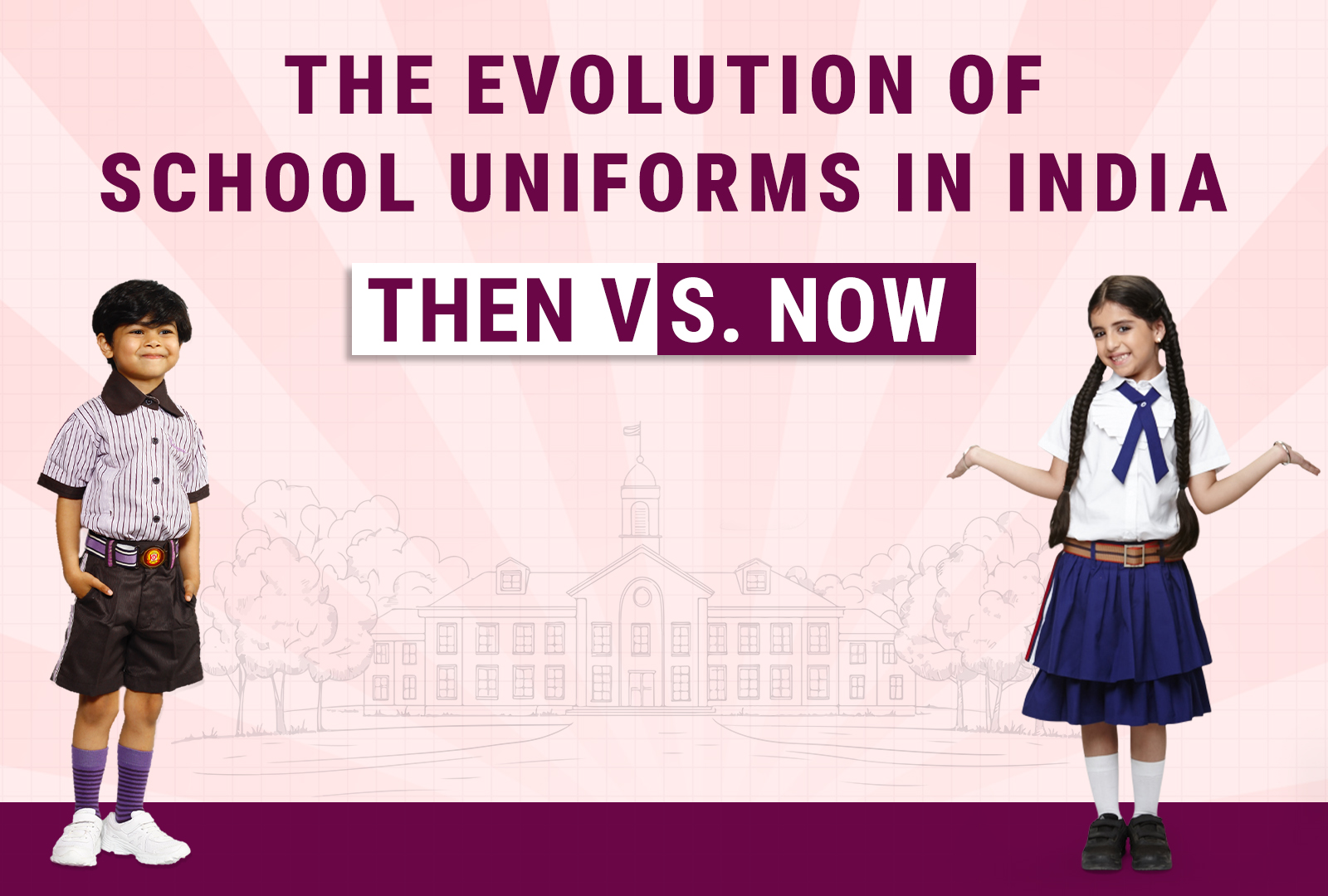
The Evolution of School Uniforms in India: Then vs. Now
School uniforms have long been a staple in Indian education, evolving from colonial-era formality to today’s stylish, sustainable, and functional designs. This journey reflects broader changes in Indian society, education, and industry.
1. The Early Days: Colonial Influence & Simplicity
Before British rule, traditional gurukuls and madrasas had no uniform requirements. The concept of standardized school attire emerged with British missionary and government schools in the 19th century.
- British Influence (1800s-1947): Schools adopted British-style uniforms—button-up shirts and shorts for boys, skirts and blouses for girls.
- The Khadi Movement: During India’s independence struggle, many nationalist schools promoted khadi-based uniforms as a symbol of self-reliance.
2. Post-Independence: Standardization & The Ready-Made Revolution (1950s-1980s)
After independence, school uniforms became simpler and standardized to promote equality. Most schools followed a basic template:
- Boys: White or light-colored shirts with navy blue shorts/trousers
- Girls: Knee-length skirts or pinafores with matching shirts
- Material: Cotton was the preferred choice for affordability and comfort.
The Game-Changer: Ready-Made Uniforms (1965)
Until the mid-1960s, parents had to buy fabric from the school and get uniforms stitched by personal tailors. In 1965, Lyallpur Emporium revolutionized the industry by introducing the concept of ready-made school uniforms in India. This made uniform buying faster, more convenient, and cost-effective, setting the foundation for the school uniform industry as we know it today.
3. The 1990s-2010s: Branding, Comfort & Customization
With India’s economic liberalization in the 1990s, private schools grew rapidly and began differentiating themselves with unique uniform designs.
Key Trends:
✅ School Branding: Logos and custom colors became common.
✅ Comfort & Fabric Innovation: Polyester blends and wrinkle-free fabrics gained popularity.
✅ Sports Kits Expansion: Schools started providing branded sportswear from Adidas and Nike.
✅ Gender-Specific & Regional Adaptations: Some schools introduced salwar-kameez options for girls in conservative areas.
4. The Present & Future: Sustainability Starts With Us
Today, school uniforms are no longer just about appearance—they’re about impact. And while many brands focus only on style or cost, Lyallpur Emporium stands alone in prioritizing the environment alongside quality and innovation.
Leading the Green Revolution
While most of the industry still uses plastic and synthetic fabrics without a second thought, we’ve taken bold steps to change the game:
- Cornstarch Packaging – Unlike plastic that lingers for 100 years, our uniform packaging decomposes in under 3.
- Biodegradable Shirt Inserts – We’ve replaced thick cardboard with eco-friendly, minimal inserts made using recycled paper.
- Eco-Conscious Shoe Boxes – Our school shoe boxes are made entirely from recycled materials.
- Responsible Production – We reserve 25% fabric for future use, reducing waste and promoting long-term planning instead of overproduction.
At Lyallpur Emporium, sustainability isn’t a marketing buzzword—it’s a responsibility we’ve embraced for the next generation. Every product we deliver is crafted with the belief that great uniforms shouldn’t cost the planet.
While others follow trends, Lyallpur leads with purpose, proving that a legacy brand can also be a forward-thinking one.
Conclusion: A Journey of Transformation
From hand-stitched khadi outfits to high-tech, eco-friendly uniforms, schoolwear in India has come a long way. Lyallpur Emporium’s innovation in 1965 marked a major turning point, making uniforms more accessible for Indian families. Today, with a focus on sustainability and design, the industry continues to evolve, shaping the student experience for the better.
At Lyallpur Emporium, we are proud to lead the way in innovation and sustainability for the next generation of students.
